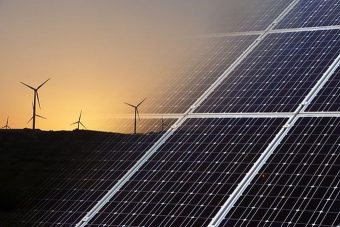
A tiny, scenic island lying off Scotland’s west coast is truly a model for sustainable, off-grid living. With no mainland electricity connection, the Isle of Eigg gets its electricity from the water, the wind and the sun.
After decades of using diesel generators, in February 2008 the residents of Eigg officially switched to their own renewable electricity supply, becoming the world’s first community to launch an off-grid electric system.
The 12-square-mile island, with its small population of 105 residents, gets ’round-the-clock power via a combination of hydroelectric generators, wind turbines, a photovoltaic array and a bank of batteries. On days when renewable resources are low or during maintenance, two 80kW diesel generators provide backup.
“The set-up that we’ve got now will carry the island all day and put charge into the batteries for the evening,” John Booth, the former director of the community-owned Eigg Electric company, told the BBC.
On days when there is a surplus of power—like when it’s particularly windy or rainy—electric heaters automatically switch on in Eigg’s church and community hall, which is ideal for keeping shared spaces warm throughout the winter.
This means “virtually no central heating in the system at all,” Booth pointed out. “We don’t charge for it because the whole community benefits.”
As the BBC detailed, before making the transition to renewables, the island relied on noisy and expensive diesel generators that could only run for a few hours a day. But with the new power system, energy is available 24 hours a day.
Eigg residents are encouraged to use their power responsibly. Each house has a maximum use limit at any one time of 5kW, which is enough for an electric kettle and washing machine to run at the same time, or fifty 100w light bulbs. Businesses get 10kW. Residents are fined if they use too much power but meters help keep electricity use on track.
“The whole thing is run by and for the island,” Booth said.
Researchers from all around the world—Brazil, Alaska and Malawi—have visited the isle to learn how the unique system can be adapted elsewhere.
Source: ecowatch.com




